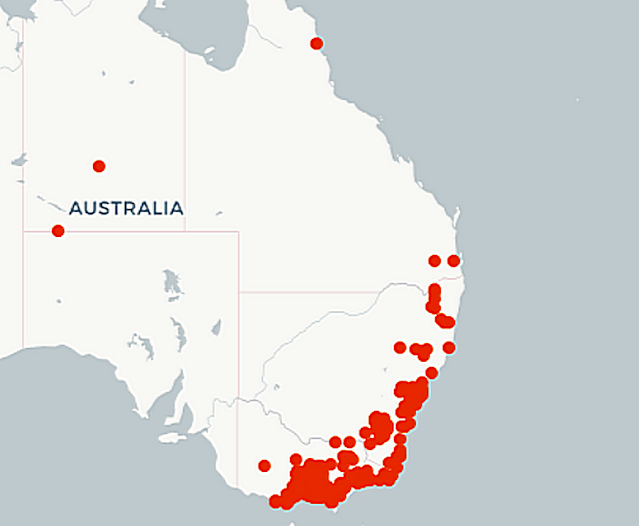Already this season, the Imperial White has been observed in some local spots – Thornell’s Reserve at Longwarry North, Tarago Reservoir Park Neerim South. Although it mostly flies fairly high in the canopy, its slow, graceful flight patterns and the intermittent flashing of the white upper wings gives away its presence. The Imperial White generally prefers to fly on cooler days and can sometimes be found flying in mid-winter.
Sometimes called the Imperial Jezabel, this butterfly is endemic to Australia and prefers to inhabit open eucalypt forest and woodland. Its host plant is various species of Mistletoe. Imperial Whites can be found in southern Queensland, NSW, Victoria and eastern South Australia.
 |
| Credit: ala.org |
After hatching from the egg, the tiny black caterpillars with white hairs, grow rapidly. They shed their skin several times as they eat more and more. At the end of its larval stage, The Imperial White caterpillar spins a silk web through the branches of Mistletoe. The pupae then attach themselves to the web and form the chrysalis from which the adult butterflies ultimately emerge.
After emerging from the chrysalis, the adult butterfly takes several hours to ‘pump up’ its wings before flying off. During its short several weeks as an adult butterfly, the Imperial White feeds briefly on nectar and spends most of the time seeking a mate. The female relies almost entirely on sight to find some suitable Mistletoe leaves on which to lay her eggs and begin the cycle again.



No comments:
Post a Comment